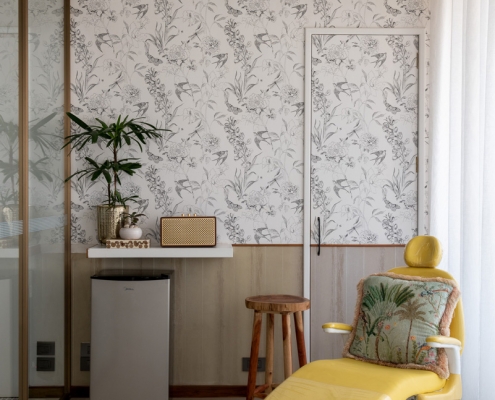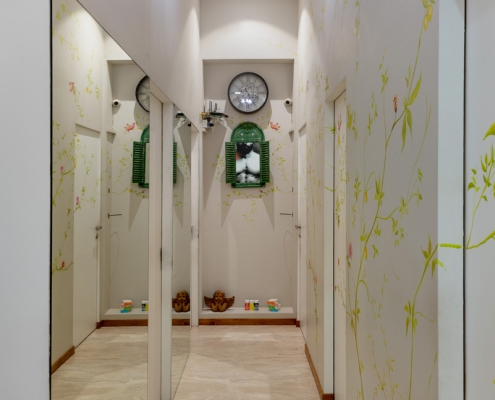Reading Beauty Product Labels Like an Expert
We are surrounded by a plethora of beauty products — sunscreen lotions, skin lightening creams, anti-ageing creams and capsules, moisturizing lotions, and many more. They have evolved a great deal in terms of sensory, active ingredients, and variety in terms of getting more skin specific. But for you to pick the right one can be a nightmare.
A simple way is to go by:
- The amount you want to spend; that narrows a lot down.
- A reputed company. They do their research well and stand by their claims mostly.
- Your skin goal and your top priority, whether it is skin lightening, anti-ageing, or sun protection. Most products nowadays cater to all of these.
- Your skin type—every standard company has this mentioned (Oil/dry/dehydrated/sensitive/damaged/ acne prone/anti-ageing etc).
This narrows down your choice to the minimum.
Now here’s some more gyan to follow while while you go beauty shopping.
Reading the label
‘The label’ is a window to what your product is and what it can do. It has enough information to guide you to pick the right product that suits your skin in terms of skin type and beauty goal.
Usually the label at the back of the bottle has a lot of information starting from the ingredient list, the skin type it is most suitable for, the application instructions, a warning sign, the date and place of manufacturing, the expiry date, and a lot more.
Make sure you look for the following on a bottle/tube label:
Skin type: Very essential. Be assured that the product suits your skin type—dry, normal, or oily. This is always specified on the bottle, mostly for sunscreens, cleansers, face washes, and night and day creams. For the rest, you need to seek expert advice.
Pictorial description of the ingredients: It is a trend now to have a small pictures of the main ingredients shown on the front side of the bottle with the description of that ingredient carried to the back of the bottle. These are usually called the ‘active ingredients’ which are the ones that really bring out the action intended by the product. Sometimes the common/familiar name is used—like turmeric, rose—but at times you have scientific names like curcumin i.e. turmeric or Peucedanum Graveolens extract which is actually ‘dill extract’.
Sometimes you find a pamphlet given along with the bottle which carries enough information about the active ingredients.
Directions for usage: Always remember too much usage and too little usage of the product will not give the expected results. The right amount should be used to get the right results. One fingertip unit is approximately 0.5-1gm.
Warning: It simply states which areas should be avoided so that no unnecessary reaction occurs. Mostly it is sensitive areas or areas with thinner skin like the under eye, corner of your mouth, crease of your nose etc. Sometimes, even to avoid the sun exposed areas or simply sensitive areas, you must read the warning so as to avoid using it on skin areas that are extra dry, red, irritated, or flaky.
Source of product: Some products contain materials from animal sources which is clearly mentioned on the label. An easy way is to look out for a red dot for animal source and green dot for plant source in a black square on one of the corners of the packaging. Animal tested: Usually clinical trials are conducted on animals to check the safety of the products. If the product has gone through animal testing, it is usually mentioned on the label. By and large, there is no animal testing now as there are a lot of other methods available. For example, digitizing skin replica can be a reliable method for wrinkle assessment and so can be used before and after may be 60 or 90 days of a particular portion or ingredient.
Colour of the product: The colour is always mentioned on the product, so ensure that the colour is the same once you open the bottle/tube. Some lotions and portions can be oxidized by the sun. For example, notice how vitamin C creams come in a black jar or a completely opaque jar to cut out light and UV damage completely. So it is important for you to make a mental note of the colour of the product you use.
Manufacturing and the expiry date: This indicates how long a product is considered good to use under normal conditions of storage and use depending on the date it has been packaged/manufactured. Cosmeceuticals, i.e. cosmetic creams with actives not of medical grade, do not usually have an expiry date. They are good to use for up to 3 years after the manufacturing. However, if there is an active ingredient like an anti-acne or pigmentation cream of a medical grade or ‘as per doctor’s prescription’ written on it, then it usually is 2 years. Or you can simply look at the expiry date on the pack. I have a practice of asking my patients to get all their previous skincare products during my first consultation with them. I see that the jars are not really in a state that it is supposed to be in—the tubes are twisted and pealed, the creams are leaking out of the jars and nozzles. Mostly we use hands to dig in from open jars, so I’d say throw them out after a year. And anyway if you are using the right quantities, with the quantities that are packaged, no face care lotion should last for more than 6 months. So my expiry date for all face care products is 1 year.
Clinically proven: This means it has been proven to work in clinical tests or in a clinical environment.
Temperature: Extremely necessary to follow to ensure that the product remains in its perfect state without giving off a bad colour, odour, and it must keep the actives active. Products are best kept at 20 degree centigrade, but this may not always be possible, so be mindful of your creams in terms of colour and consistency.
What’s in the bottle?
To know what’s in a bottle of the beauty potion that you have picked up, just scan down to the ‘ingredients’. Don’t get overwhelmed by the seeming jargon listed there.
Know that usually the ingredients in highest amounts or concentrations in the potion are written first followed by the next set of important ingredients. Near the end of the list you might find out about the preservatives used. There is always the base formulation or stabilizing agents into which the active ingredients are added. Sometimes you will also notice that the publicised active is listed way down on the list. That is mostly because the concentration of the active used is less, which does not necessarily mean that the product is any less effective.
Creams/lotions/serums: What’s all the fuss about?
It is all about oil-in-water or water-in-oil emulsion, oil- in-water being the non-sticky, non greasy one and water- in-oil being the heavy one (usually the night creams).
Even though serums seem to have grabbed all the limelight of late, they are nothing but water-in- silicone/ oil-in-silicon + oils, i.e. generally low viscosity translucent liquids. These are light and presumed as more potent than creams or as concentrates. But that’s a marketing strategy. All they are is a different medium and silicon gives you the sense of a velvet finish.
Here goes the list:-
Peptides: These could be the pentapeptides, oligopeptides, tripeptides, tetrapeptides—all of these actually help in the reduction of wrinkles and facial lines. These help stimulate collagen synthesis.
Peptides are amino acids linked up in short chains. These were originally developed as a part of wound healing research on human fibro blasts, i.e. cells that produce new cells. Basically 3 types are used in cosmetic creams and portions—signal peptides, carrier peptides, and neurotransmitter modulating peptides.
Peptides in general help stimulate fibroblast production, down regulate the elastin and collagen degrading factors. Also increases feedback regulation of new collagen synthesis.
Carrier peptides stabilize and deliver some heavy molecules like metals and trace elements in your creams.
Neurotransmitter modulating ones are what the ‘Botox creams’ have in them.
Treatment Actives:
Antioxidants: This skin boosting complex will have a blend of:
Vitamin A/retinoids: These are a group of compounds that have the basic core structure of vitamin A. It is available as oxidized metabolites and now synthetically developed ones like tretinoin, adapalene etc. In the synthetic forms, the irritation factor which otherwise a retin A causes is lesser. The benefits in whichever form are protection from photo damaged skin, ageing skin, acne and more serious issues like psoriasis.
Vitamin E: Also called tocopherol acetate, an an- tioxidant that protects the cells from the damage- ing effects of oxidation, helps in some pigmentary and dry skin conditions. Some antioxidants like glutathione or ubiquinol can be synthesised by us. Vitamin E has to be supplemented.
Vitamin C: Ascorbic acid, ascorbylglucoside acts as a naturally occurring antioxidant essential for collagen synthesis. It adds on to the antioxidant action of vitamin E and lightens pigmentation. It also reduces the elastin accumulation in photoaged skin (thick rubbery feeling/looking skin). Vitamin C is poorly absorbed when taken orally. It is therefore most popular in application forms. If your Vit c is turning yellow, then the active form L ascorbic acid is used. Therefore, in the recent formulations, there might be magnesium ascorbyl phosphate and ascorbylpalmitate. These are more stable. Even on topical application, it enhances collagen production and reduces collagen breakdown. Also great to protect you from the oxidative damage caused by the sun. Therefore, I recommend all my patients to apply a layer of vitamin C and then top it with sunscreen as sunscreen alone cannot stop the free radical damage caused by UV rays. It has an anti-inflammatory property. Inflammation, it has been proved, leads to most unwanted changes in the body, inside out .
Vitamin B
B-3 Niacinamide: Prevents photodamage, helps in skin redness like in rosacea by reducing factors causing skin irritation, atopic (allergic) skin types by reducing water loss from the skin. Niacinamide has been one of the most popular skin lightening ingredients used in over-the-counter skin lightening creams by reducing the transfer and production of melanin—the pigment that causes darkening. Also prevents yellowing of skin, so it is popular among the fair but yellow under tone skins like in Japan and Far Eastern countries. It helps improve texture, pore size, and decreases the excess oil in the skin.
B5- Panthenol: Mainly used in treating bruises, scars, burns etc. It promotes cell multiplication, stimulates growth, and increases skin lipid production. It is cosmetically used for hydration and repair of skin.
Anti-Ageing Ingredients
Vitamin A derivatives:
> Retinyl Palmitate: A derivative of vitamin A, helps stimulate collagen and reverses the signs of prematurely-induced photoageing. Helps to increase skin elasticity while enhancing water barrier properties.
> Retinyl Proprionate: Retinoids are natural or synthetic substances derived from vitamin A. Clinical studies have proven that the topical application of retinyl proprionate, a less irritating form of vitamin A used for conditioning, is effective in reducing the appearance of fine lines and wrinkles. It also smoothens skin texture and reduces the look of discoloration.
> Peptides: improves the appearance of skin age- ing without the irritation caused by retinoids. These are short-chained proteins which stimulate production of new collagen and elastin and also decrease collagen breakdown. The neurotransmit- ter modulating peptides are the ingredients in the ‘Botox creams’. They act on the neurotransmitters interface between the nerve and the muscle con- traction .
Hyaluronic acid/propylene glycol/glycerine: Hu- mectants that help retain skin moisture.
AHA or Alpha hydroxy acid: For exfoliating skin cells and resurfacing newer layer.
> Glycolic acid: Mainly used to improve the appear- ance and texture of the skin by a ‘peel action’, helps improve acne scarring, hyper pigmentation, age spots, and wrinkles.
> Lactic acid: Helps retexture skin’s surface and stimulates cell renewal and cell turnover, helps control melanin synthesis, hydrates skin, and stim- ulates ceramide production.
> BHA or Beta hydroxy acid: One form of BHA is Salicylic Acid which acts as an effective keratolytic (exfoliant) agent, also an anti-irritant, and functions mainly as an anti-inflammatory agent. It encourages the exfoliation of dead skin and renews the outer layer of skin.
Skin Lightening Agents
>Kojic acid: It is a by-product of the fermentation process of malting rice for use in the manufacture of sake(Japanese rice wine); it is effective for inhibiting melanin production, helps in skin lightening and establishing an even skin tone.
>Hydroquinone: It is the primary topical ingredient for inhibiting melanin production. Helps in reducing and potentially eliminating brown spots and hyperpigmentation from melasma.
>Arbutin: derived from bearberry. Less effective than kojic
>Vitamin C: interferes with pigment production.
>Niacinamide: It is one of the safest skin-lightening agents and the commonest ingredients in your
over-the-counter product.
>Azelaic acid: natural ingredient. Highly active on
pigmented skin. Apply twice daily. This is one of
my favourite ingredients.
>Liquorice root: Interrupts the stimulation of an
enzyme that activates melanin production, works
on lightening dark spots and hyper pigmentation.
>Botanical anti inflammatories and soothing agents: Ginkgo biloba, green tea, allantoin; mostly used in eye creams: witch hazel, green tea; mostly in products for acne prone skin, aloe vera; this will be the species with the medicinal properties. There are more than 400 species and only a countable few have the medicinal property and after plucking, if it is not preserved well, the benefit is soon gone. This one is for all of you who think it is okay to pot it, pluck it, and use it. Also naturals do not mean no allergies/no harm.
>Some of the most recent used herbs and botanicals
in skin and hair care are the ones that our Indian families have told us all this while like garlic, turmeric, basil, almond, neem, sunflower, pomegranate, teas, milk extracts, and hibiscus.
>Citrus Grandis or Grapefruit Extract: Rich in flavonoids that inhibit Tyrosinase; a natural source of vitamin C that inhibits melanogenesis.
Metals
Zinc: Helps in cell repair and growth, fights sun damage.
Copper: Collagen formation and hair growth and
strength.
Iron: Apart from all the other benefits to health, it is very important for skin glow and oxygenation. An iron deficiency leads to hair fall and dark circles around the eyes.
Aluminium: Used in antiperspirants.
Magnesium: Maintains skin health.
Calcium: Cell growth and anti-inflammation.
Silver: Anti-bacterial.
Sun Blocks:
Avobenzene: Which absorb the UV radiations.
Octinoxate/Octisalate/Octocrylene/Homosalate/
Oxybenzone: Broad spectrum sunscreen.
Titanium oxide: Offers broad spectrum sun
protection, physical sunscreen/texturizer.
Zinc oxide: Physical sunscreen with soothing properties. These physical ones block light and are the ones that give you the white colour on the skin while you apply sunscreen. In a paste form you’ll see sportsmen using this to protect their skin from UV damage.
Moisturizers
Occlusive components: They slow down the water loss by evaporation—more like moisture sealants like oils/waxes, petrolatum, mineral oils, paraffin, squalene, silicone derivatives, fatty acids, wax esters. These are best used when there is some moisture to start with, not when the skin is super dry already. So either you use them on wet/damp skin or use a mist to hydrate the skin and then use these agents.
Humectants: They attract water from your skin or the atmosphere. These include glycerine, urea, and sodium lactate. So it’s not a good idea to use them when the ambient humidity is low.
Emollients: These are oils that give a soothing feeling on dry skin like castor oil, jojoba oil, coconut oil, glyceryl and coctyl stearate.
Few commons
Glycerin: A humectant that helps hold moisture.
Oils: Like coconut oil/almond oil that soften and smoothen the skin.
Cera alba/beeswax: Softens and smoothens the skin. Also contains vitamin A which may be beneficial in softening and rehydrating dry skin and in cell reconstruction.
Shea butter: A rich fruit-based moisturizer that also has vitamin A to soothe dryness caused in mature skin.
Know the Jargon
There are these set of terms that you see on almost all the products that your buy, but you are confused as what they really mean. Not knowing their meaning can lead you to buying the wrong product or formulation. So what do they mean? Read on to find out.
Inactive ingredients: These could be preservatives, colours, fragrance, or flavours used in the making of the product and which do not necessarily contribute to the function/effect that the product claims.
Non-comedogenic: Cosmetic products that are non- comedogenic (or referred to as non-occlusive) don’t plug the pores, so don’t cause skin irritation or pimples.
Parabens: Preservatives in cosmetics.
SPF: SPF is an acronym for sun protection factor. Sunscreen products have an SPF; the higher the SPF, the more protection you get from sunburn. 1 SPF gives a 10-minute protection under the sun.
TPI: TPI stands for tan protection index .Simply put, it is the number of minutes you are in the sun and will not get tanned. This is denoted by the plus signs on the bottle.
Sunblock: Sunblock, as opposed to sunscreen which acts more like a UV filter, is a lotion that actually blocks the UV-rays. Mostly these are physical blocks which hold the sunscreen like a fabric or metal shield.













Leave a Reply
Want to join the discussion?Feel free to contribute!